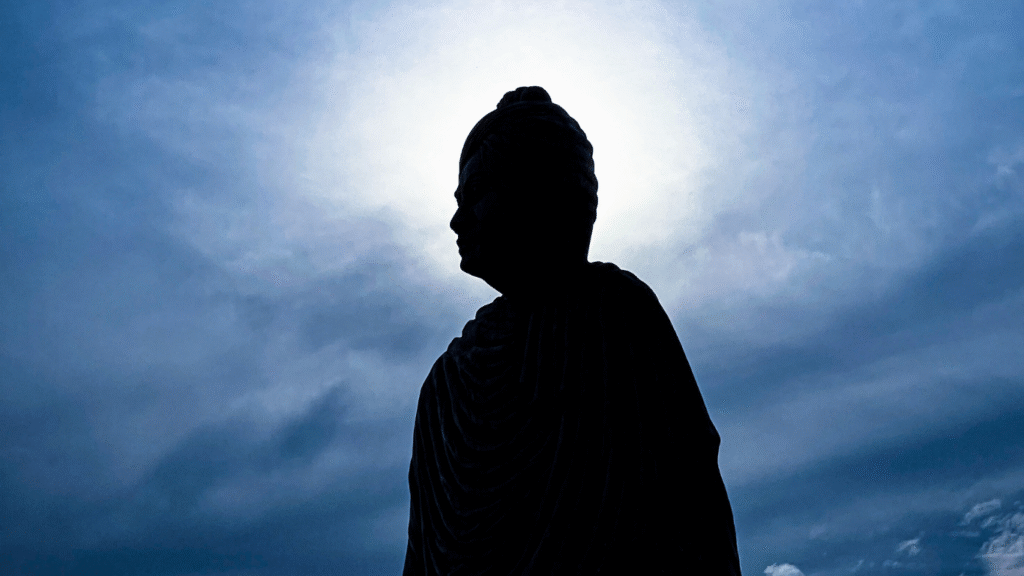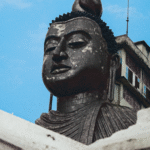Shridhar Swami, a revered saint from Karnataka, was a beacon of spiritual wisdom who touched countless lives. Born in 1908 in Lad Chincholi, he dedicated his life to spreading the teachings of Sanatan Vedic Dharma, blending devotion and knowledge. A disciple of Samarth Ramdas, he was seen as an incarnation of Lord Dattatreya by many, including saints like Swami Sivananda. From a young age, Shridhar showed a deep spiritualmediocre education. His travels across India, powerful discourses, and writings simplified complex Vedic ideas for everyday people. In 1967, he founded an ashram in Varadapur, Karnataka, which became a hub for spiritual seekers. Known for his compassion and intense spiritual practices, Shridhar Swami’s legacy lives on through his teachings and devotees.
Early Life and Spiritual Calling
Shridhar Swami, born on December 7, 1908, in Lad Chincholi, Karnataka, to Narayan Rao and Kamalabai Deglurkar, showed spiritual leanings early on. Losing his father at three and his mother and brother by ten, he faced hardship young. Raised by his aunt in Gulbarga, his spiritual spark grew stronger. A childhood story tells of him chanting Lord Ram’s name during illness, skipping studies, yet acing exams—a sign of his faith. At 18, urged by his teacher Palnitkar, he journeyed to Sajjangad, the abode of Samarth Ramdas, seeking divine truth. This marked the start of his lifelong quest to understand the universe’s creator, shaping his path as a spiritual guide.
Childhood Challenges
Orphaned young, Shridhar faced a tough start. After his father’s death, his mother and brother cared for him until their passing when he was ten. Moving to Gulbarga, he lived with his aunt, continuing his education. His early devotion to Lord Ram, seen in his exam success through chanting, hinted at the extraordinary spiritual journey that awaited him.
Journey to Sajjangad
At 18, Shridhar’s spiritual hunger led him to Sajjangad, where Samarth Ramdas, his future guru, had lived. On Vijayadashmi, he set out, feeling called to find the universe’s creator. After a year and a half, Ramdas blessed him in a vision, directing him to spread Sanatan Dharma’s message, setting the stage for his life’s mission.
Spiritual Journey and Teachings
For 13 years, Shridhar Swami wandered South India on foot, sharing Sanatan Vedic Dharma’s core principles. His talks at temples and mathas made complex Vedic ideas simple, focusing on devotion and mental clarity. In 1942, he took sannyasa at Shigehalli, earning the title Shreemat Paramhans Parivrajakacharya. His mantra sadhana and love for Lord Ram fueled his enlightenment. From 1942 to 1967, he traveled India, giving speeches and writing books like Arya Sanskriti to spread Vedic wisdom. His teachings urged people to unclutter their minds and embrace silence, blending knowledge and devotion for spiritual growth.
Core Message
Shridhar Swami taught that true happiness comes from understanding the soul and shedding worldly distractions. His blend of mantra sadhana and devotion to Lord Ram offered a clear path to enlightenment. By simplifying Vedic teachings, he made them accessible, encouraging people to seek inner peace through faith and self-awareness.
Key Writings
Shridhar’s books, like Jnana Yoga and Bhakti Yoga, broke down Vedic philosophy into easy ideas. Works such as Moksha Sandesha and Divya Sandesh inspired spiritual seekers with practical wisdom. His writings, rooted in devotion and knowledge, remain cherished for guiding readers toward a meaningful, disciplined life.
Founding the Varadapur Ashram
In 1967, Shridhar Swami settled in Varadapur, Karnataka, founding an ashram that became a spiritual hub. Here, he raised the Dharma Dwaja, a symbol of Sanatan Dharma’s revival. The ashram, in Sagar, hosted his intense spiritual practices and drew devotees seeking guidance. It stood as a center for Vedic learning, free from casteism and rigid rituals. Even after his passing in 1973, the ashram remains a beacon, preserving his vision of a united, spiritually vibrant Hindu community.
Purpose of the Ashram
The Varadapur Ashram was Shridhar’s dream to revive Sanatan Dharma’s essence. It offered a space for meditation, study, and community, free from social divides. His teachings there focused on devotion, self-discipline, and Vedic wisdom, inspiring countless seekers to live with purpose and clarity.
Legacy at Varadapur
After Shridhar’s mahasamadhi in 1973, the Varadapur Ashram continued to thrive, hosting spiritual events and preserving his teachings. Devotees visit to honor his Dharma Dwaja and learn from his books. The ashram’s influence endures, guiding people toward enlightenment and unity in Karnataka and beyond.
Recognition by Other Saints
Shridhar Swami’s spiritual radiance earned praise from giants like Swami Sivananda, who called him a “Tejasvi” and “Purna Gyani.” Anandamayi Ma saw him as a guide atop the spiritual hill. Satya Sai Baba, visiting Varadapur, declared him “Brahma” in tapasya. Shankaracharya Abhinava Vidyateerthji offered him Shringeri’s holy seat, which Shridhar humbly declined. These endorsements highlight his profound impact on India’s spiritual landscape.
Swami Sivananda’s Praise
In 1948, after eight months of tapasya in Uttarkashi, Shridhar visited Rishikesh. Swami Sivananda, founder of the Divine Life Society, instantly recognized his divine glow, calling him an “Akhand Brahmanishta.” Sivananda’s disciples were told they’d never meet a saint of Shridhar’s caliber, cementing his revered status.
Other Saints’ Admiration
Saints like Anandamayi Ma and Satya Sai Baba marveled at Shridhar’s spiritual depth. Anandamayi Ma said he stood firm on the path of Paramarth. Satya Sai Baba, at Varadapur, saw him as a divine force. These praises from spiritual giants underscored Shridhar’s universal respect.
Literary Contributions
Shridhar Swami’s writings, like Dasbodha commentaries and Arya Sanskriti, made Vedic teachings approachable. His books, including Ujjwal Sandesh and Panchikaran, wove devotion and philosophy into simple prose. Written in Kannada and Marathi, they inspired all castes with their clarity. His poetry and discourses, often shared at temples, stirred spiritual awakening. Even today, his works guide readers toward a life of purpose and inner peace.
Major Works
Shridhar’s key texts include Jnana Yoga, Bhakti Yoga, and Moksha Sandesha. These books simplified Vedanta’s complex ideas, blending devotion to Lord Ram with practical wisdom. His commentary on Dasbodha by Samarth Ramdas remains a spiritual gem, widely read for its clarity.
Impact of Writings
Shridhar’s books reached the common man, breaking caste barriers with their simple style. His poetry and talks, like Vismriti pravachana, stirred hearts, urging readers to seek truth and live with discipline. His works remain timeless, guiding spiritual seekers across India.
Lasting Impact and Legacy
Shridhar Swami’s life transformed India’s spiritual scene. His tireless travels, ashram, and writings revived Sanatan Dharma, fighting casteism and ritualism. Recognized by saints and loved by masses, his teachings on devotion and knowledge endure. The Varadapur Ashram and his books, like Divya Sandesh, continue to inspire. Passing in 1973, Shridhar’s Dharma Dwaja still waves, calling people to a life of faith, unity, and inner peace.
Social Transformation
Shridhar Swami work tackled social evils like casteism, uniting people through Vedic teachings. His ashram and talks fostered a sense of community, encouraging devotion and discipline. By simplifying spirituality, he made it a way of life for all, leaving a lasting mark on society.
Continued Influence
Today, Shridhar’s Varadapur Ashram hosts devotees seeking his wisdom. His books, like Arya Sanskriti, are widely read, and his teachings guide spiritual groups. His emphasis on Lord Ram’s name and mental clarity continues to shape lives, keeping his legacy alive.



